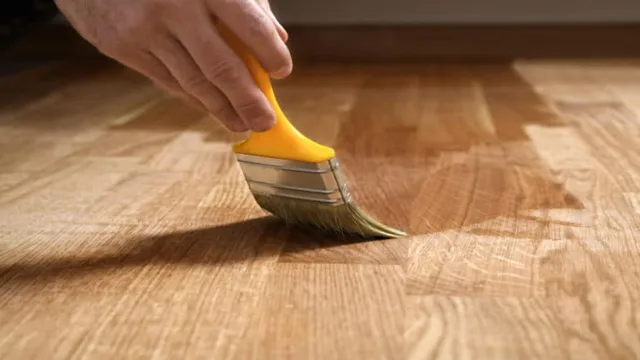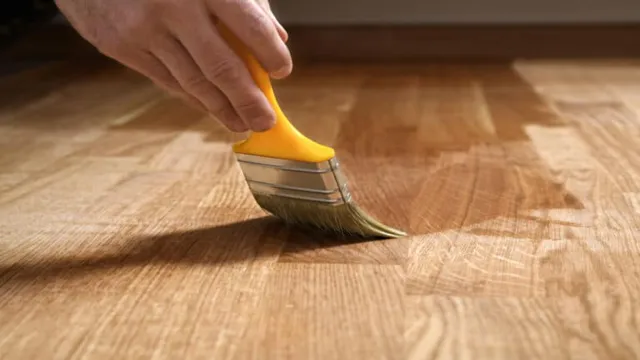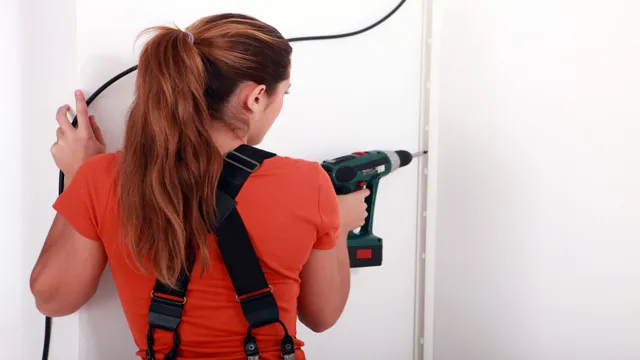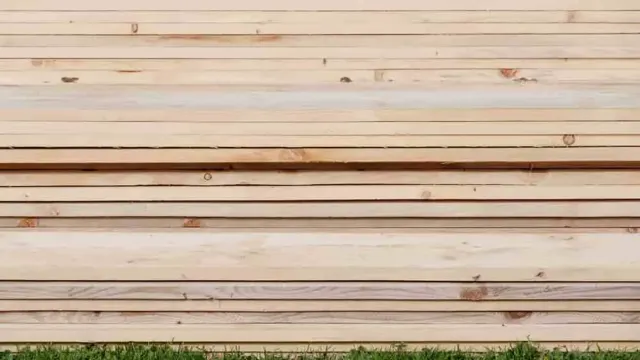How to Dowel a 45 Degree Joint: Tips and Tricks for a Strong and Sturdy Woodworking Connection

Have you ever wondered how to create a 45 degree joint that’s sturdy and aesthetically pleasing? Look no further than doweling! This technique involves drilling holes into the wood and inserting dowels to connect the pieces at a precise angle. It’s a reliable method that’s been used for centuries, and it’s surprisingly simple to do yourself with the right tools and techniques. Doweling a 45 degree joint can be particularly challenging because the angle requires precision and accuracy.
However, with patience and attention to detail, you can create a joint that’s strong, durable, and visually pleasing. Whether you’re a woodworking enthusiast or just starting to dabble in the craft, doweling is a valuable skill to add to your repertoire. In this blog post, we’ll dive into the specifics of how to dowel a 45 degree joint, including the tools and materials you’ll need, step-by-step instructions, and tips for achieving a flawless finish.
We’ll also highlight some of the benefits of doweling, including its ability to create strong and durable joints without the need for unsightly screws or nails. So whether you’re working on a DIY project at home or tackling a more advanced woodworking project, doweling is a technique you won’t want to miss. Let’s get started!
Gathering Materials and Tools
To begin doweling a 45 degree joint, you’ll need a few tools and materials. The most important item to have is a doweling jig, which helps ensure that your holes are drilled at the correct angle and depth. You’ll also need a drill with a bit that corresponds to the size of your dowels, as well as wood glue and clamps to hold the joint together once you’ve inserted the dowels.
Additionally, you’ll need a miter saw or handsaw to cut your wood at a 45 degree angle, and sandpaper to smooth out any rough edges. With these tools and materials on hand, you’ll be ready to tackle your 45 degree joint project with ease.
Requirements for Doweling a 45 Degree Joint
When you need to dowel a 45-degree joint, you’ll need a few specific materials and tools to get it right. First and foremost, you’ll need dowels that are the correct size for your joint. You can buy dowels at most hardware stores, and it’s important to choose the right size for your particular project.
You’ll also need a drill bit that is the same size as your dowel and a drill that is powerful enough to create a hole in the wood. In addition to these materials, you’ll need wood glue to hold the joint together and clamps to keep the joint in place while the glue dries. Finally, make sure you have a pencil and measuring tools to mark the locations of your dowel holes and ensure they are placed at the correct angle and depth.
By gathering all of these materials and tools ahead of time, you can ensure a smooth and successful doweling process for your 45-degree joint.

Tools for Doweling a 45 Degree Joint
If you’re planning on doweling a 45-degree joint, it’s essential to gather the necessary materials and tools. First, you’ll need the appropriate drill bits, preferably with a sharp point and a diameter that matches the size of your dowel. You’ll also need a doweling jig to ensure the hole is drilled at the correct angle.
A dowel center is also helpful to ensure proper alignment during assembly. A measuring tape or ruler is necessary to mark the drilling depth on the bit, and a clamp can secure the jig in place on the workpiece. It’s important to choose the right type of glue, preferably waterproof and appropriate for use with the materials involved.
Lastly, a hammer or mallet can be useful for tapping the dowels into place. With these tools at hand, you can ensure a precise and sturdy 45-degree joint.
Preparation for Doweling
When it comes to doweling a 45 degree joint, preparation is key. First and foremost, you’ll want to ensure that your wood is properly squared and prepared for cutting. Make sure you have all the necessary tools on hand, such as a saw, drill, and dowel jig.
Once you have everything ready, mark out where your dowels will go on both pieces of wood, ensuring that they line up perfectly. This is where the dowel jig comes in – it’ll help you to create perfectly aligned holes in your wood for the dowels to go in. Make sure you choose the right size drill bit for your dowels, as well as for the holes themselves.
Once all holes are drilled, you’re ready to glue in your dowels and bring the two pieces of wood together. It’s always a good idea to practice on a scrap piece of wood before tackling your final project. And remember, take your time – rushing through the doweling process could lead to misalignment and a weakened joint.
By properly preparing and taking your time, you’ll end up with a beautifully crafted, sturdy 45 degree joint in no time.
Measuring and Marking the Joint
When it comes to doweling, preparation is key. One of the crucial steps to ensure a successful joint is measuring and marking the area to be doweled. This involves accurately measuring both pieces of wood to determine where the dowels should be placed.
It’s important to use a high-quality measuring tool, such as a steel ruler or calipers, to ensure precise measurements. Once the measurements have been taken, it’s time to mark the placement of the dowels on both pieces of wood. This can be done using a marking gauge or pencil and square to ensure that the holes are drilled at the correct angles.
Taking the time to accurately measure and mark the joint will greatly improve the chances of a strong and tight joint.
Selecting the Dowels and Drill Bit Size
When it comes to doweling, selecting the right dowels and drill bit size is crucial for a successful project. There are a variety of dowel sizes and materials to choose from, such as wood, plastic, or metal. It’s important to consider the size of the joint you’re creating and the strength required for your project.
A larger dowel will provide more stability, while a smaller dowel will allow for more flexibility. Once you’ve selected your dowel, you’ll need to choose the corresponding drill bit size. The drill bit should be slightly smaller than the dowel to create a snug fit.
It’s a good idea to double-check your measurements before drilling to ensure that everything lines up correctly. Taking the time to properly prepare for doweling will ensure a strong and lasting joint.
Doweling the Joint
If you’re looking to create a strong and stable 45-degree joint, doweling may be the way to go. First, you’ll need to mark the areas where the dowels will go on both pieces of wood. Then, using a doweling jig, drill holes for the dowels to fit into.
Apply glue to the holes and insert the dowels, making sure they are flush with the surface of the wood. Next, add glue to both sides of the joint and clamp the pieces together, making sure they are lined up perfectly. Leave the joint to dry for at least 24 hours before removing the clamps.
Once the glue is fully cured, the dowels will provide additional strength and stability to the joint. With a bit of practice, doweling can be a reliable method for creating strong and sturdy 45-degree joints that will stand the test of time.
Drilling Holes for Dowels
When it comes to joining two pieces of wood together, dowels are a great option. However, to make sure the joint is strong and secure, it’s important to properly drill the holes for the dowels. The first step is to mark where the holes will go on both pieces of wood.
Then, using a dowel jig to guide the drill bit, drill the holes into each piece of wood. It’s important to use the correct size drill bit and to drill the holes to the correct depth, as this will ensure the dowels fit properly and the joint is tight. Once the holes are drilled, you can apply glue to the dowels and insert them into one piece of the wood before joining the two pieces together.
This creates a strong and durable joint that is perfect for a variety of woodworking projects. By taking the time to properly drill the holes for the dowels, you can ensure that your project will last for years to come.
Gluing and Inserting Dowels
Doweling, also known as inserting dowels, is a simple but effective way of joining wood pieces together. It involves creating matching holes in two separate pieces of wood and then inserting dowels (short cylindrical rods) that fit snuggly into them. This creates a strong and seamless joint that is more resistant to lateral forces than a plain glued joint.
When it comes to doweling, precision is key. The holes need to be drilled in the right places, at the right angles, and to the right depth in order to ensure a tight fit. The dowels should be coated in glue before being inserted, so that they bond with the wood fibers and create a secure connection.
For an even stronger joint, you can use multiple dowels and alternate their orientation, so that they create a criss-cross pattern. Whether you’re making furniture, cabinets, or frames, doweling is a great technique to have in your woodworking arsenal.
Finishing Touches
When it comes to creating a 45 degree joint, doweling is a great method to use for a strong, reliable hold. To dowel a 45 degree joint, start by marking the center of both pieces with a pencil and using a doweling jig to drill holes for the dowels. Then, add glue to the holes and insert the dowels, making sure they are flush with the surface.
After joining the pieces together, use clamps to secure everything in place and allow the glue to dry for the recommended amount of time. Finally, use a saw to trim off any excess dowels or glue that may be visible. Following these steps will result in a sturdy and professional-looking 45 degree joint that will hold up over time.
Sanding and Staining the Joint
After the joint has been sanded, it’s time to give it the finishing touch by staining it with the perfect color. Staining the joint is important both for its looks and durability. It adds an extra layer of protection against wear and tear while also highlighting the wood’s natural beauty.
To begin, choose the right stain color and apply it using a brush or cloth to ensure even coverage. Be sure to follow the manufacturer’s instructions and apply multiple coats if necessary. Once the stain is dry, seal the joint with a clear finish or sealant.
This will protect the stain from fading over time while also making it easier to clean. Finally, buff the joint with a soft cloth to give it a glossy finish. With these simple steps, you can transform any joint into a work of art that will last for years to come.
Final Inspection and Use
After putting in the hard work to build something, it’s important to make sure it’s ready for use. That’s where the final inspection comes in. It’s a chance to go over everything with a fine-toothed comb and ensure that it’s all in order.
This is the time to check that the finishing touches have been completed, such as sanding and staining or painting, and that everything looks good. It’s also an opportunity to make sure that the item is safe to use. For instance, if it’s a piece of furniture, it should be checked for stability, and if it’s an electrical item, it should be tested to make sure that it works properly.
These checks may seem basic, but they’re crucial to ensuring that the item meets the necessary standards and is safe to use. So take the time to do a thorough inspection before using the item, and be confident that it’s ready to use.
Conclusion
With these simple steps, you can dowel a 45 degree joint like a true woodworking pro. Just remember, patience and attention to detail are key. As the saying goes, measure twice, dowel once! So go ahead, tackle that angled joint with confidence and precision, knowing that you’ve got the right tools and techniques for the job.
And who knows, maybe you’ll even impress your woodworking friends with your newfound doweling skills. Cheers to perfectly aligned 45 degree joints!”
FAQs
What is a dowel?
A dowel is a small cylindrical pin used to reinforce joints in woodworking.
Why would you use dowels in a 45 degree joint?
Dowels reinforce the joint and prevent it from pulling apart over time, making it stronger and more durable.
What kind of wood is best for doweling a 45 degree joint?
Hardwoods such as oak, maple, and walnut are the best choices for doweling a 45 degree joint because they are strong and dense.
How do you drill a dowel hole for a 45 degree joint?
Use a dowel jig to ensure proper alignment of the holes at 45 degrees. Clamp the jig in place and drill the hole with a drill bit the same size as the dowel.
How many dowels should be used in a 45 degree joint?
Two or three dowels spaced evenly along the joint will provide the necessary reinforcement for a 45 degree joint.
Can you use glue with dowels in a 45 degree joint?
Yes, applying glue to the dowels before inserting them into the holes will increase the strength of the joint.
What is the benefit of using dowels instead of screws in a 45 degree joint?
Dowels provide a seamless look to the joint, whereas screws can be visible and detract from the aesthetics of the piece.







